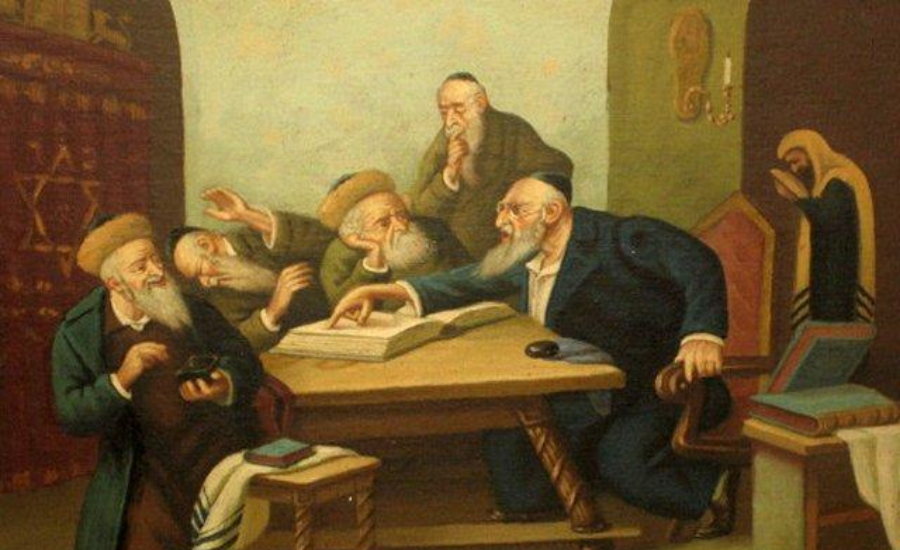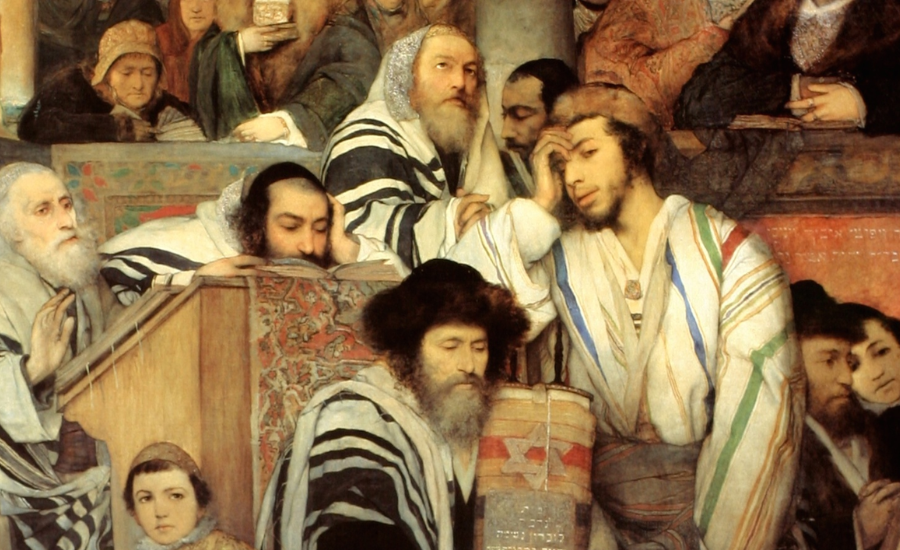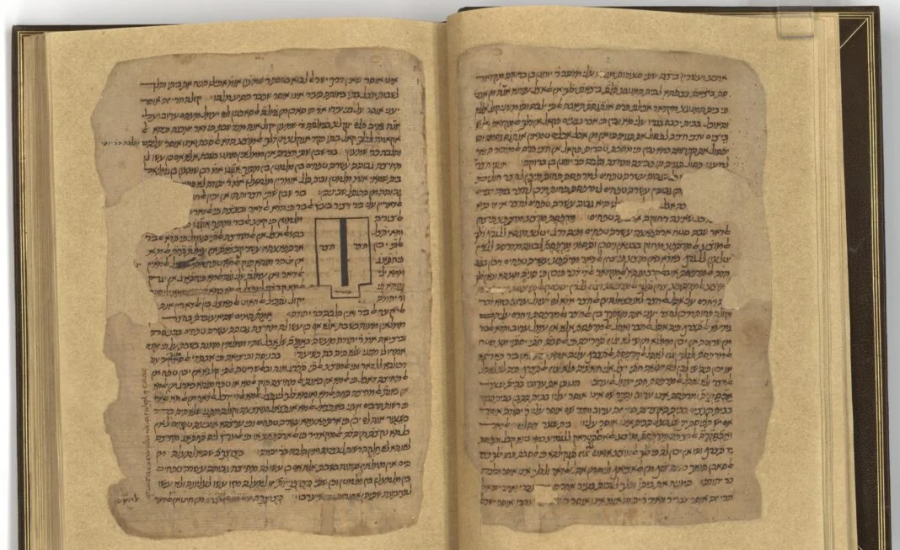Maimonides, known as the Rambam, is a towering figure in Jewish thought, whose profound influence is evident through his extensive contributions to Jewish law, philosophy, and tradition. Among his seminal works is the Rambams list of Tanaaim Peirush Mishnayos, a critical commentary on the Mishnah. This list is essential for understanding the foundational aspects of Jewish law, particularly as it pertains to the Tannaim—the revered sages of the Mishnah. These Tannaim played a central role in the creation and preservation of the Oral Law, and the Rambam’s detailed documentation of their contributions highlights their significance in shaping Jewish legal and philosophical discourse.
In Peirush Mishnayos, the Rambam meticulously outlines the rambams list of tanaaim, providing a thorough analysis of their roles and contributions. This list not only details the individual achievements of these sages but also emphasizes their collective impact on the development of Jewish jurisprudence. The Rambam’s careful recording of these Tannaim reflects his dedication to maintaining the authenticity and continuity of Jewish oral traditions. By offering insights into their legal and philosophical contributions, the Rambam ensures that the legacy of these ancient scholars is preserved and understood within the broader context of Jewish law.
The rambams list of tanaaim serves as a vital resource for those seeking to grasp the origins and evolution of Jewish legal thought. This comprehensive list provides valuable information on the Tannaim’s contributions and their lasting influence on Jewish tradition. Through his meticulous documentation, the Rambam underscores the enduring importance of these sages in shaping Jewish legal and philosophical practices. Their impact continues to resonate, making the Rambam’s work an indispensable reference for scholars and practitioners aiming to explore the depths of Jewish oral law and tradition.
The Role of the Tannaim in Jewish Tradition

The Tannaim were influential rabbinic scholars who lived from around 10 CE to 220 CE. Their primary role was to develop, interpret, and transmit the Oral Torah, which was eventually compiled into the Mishnah. As part of an enduring tradition that traces its origins back to Moses at Mount Sinai, the Tannaim played a crucial role in preserving Jewish oral traditions during a time of considerable upheaval, especially following the destruction of the Second Temple in 70 CE. Their scholarly efforts ensured the continuity of Jewish law and practice through a time of profound change.
The contributions of the Tannaim to Halakhic discourse were foundational, as they helped shape the core principles of Jewish law that are still studied and followed today. Their teachings are extensively cited in key texts of the Oral Law, including the Mishnah, Tosefta, and Baraitot. The Rambam’s list of Tannaim from his commentary on the Mishnah provides a detailed record of these scholars, offering valuable insights into their individual teachings, personalities, and impact on Jewish legal and philosophical thought. This list is essential for understanding the evolution of Jewish law and the significant role these sages played in its development.
The rambams list of tanaaim serves as a critical resource for those exploring the origins and development of Jewish legal traditions. By documenting the contributions of these early scholars, the Rambam provides a window into their influence on the transmission of Jewish oral law. This comprehensive list not only highlights the Tannaim’s pivotal role in shaping Jewish jurisprudence but also preserves their legacies for future generations to study and appreciate. The Rambam’s meticulous recording underscores the enduring significance of these sages in the history and practice of Jewish law.
The Significance of Maimonides’ Early Work on the Tannaim
Maimonides’ list of Tannaim from the Rambam in Peirush Mishnayos represents a seminal contribution to Jewish scholarship, originally composed in Arabic before being translated into Hebrew. This critical work offers profound insights into the Mishnah by elucidating its intricate legal and ethical discussions. The Rambam’s approach was distinctive for its clarity and organization, effectively summarizing complex debates and making them more accessible. One of the most significant features of the Rambam’s list of Tannaim from Peirush Mishnayos is its detailed examination and commentary on the Tannaim, which enriches the understanding of these scholars’ contributions and their influence on Jewish legal traditions.
Written during Maimonides’ early career, this commentary serves as a precursor to his more extensive works, including the renowned Mishneh Torah. Despite its earlier composition, the list of Tannaim from the Rambam in Peirush Mishnayos remains highly esteemed for its intellectual rigor and precision. The Rambam’s work goes beyond mere legal interpretation; it includes a comprehensive historical and biographical overview of the Tannaim, providing context to their roles and contributions within Jewish law and tradition.
The Rambams list of Tanaaim not only highlights the scholarly achievements of these early sages but also sets the stage for Maimonides’ later, more detailed explorations of Jewish law. This commentary is valued for its ability to make the complexities of the Mishnah comprehensible while preserving the rich legacy of the Tannaim. As such, the Rambam’s list of Tannaim remains an essential resource for understanding the development of Jewish legal thought and the enduring impact of these foundational scholars.
Exploring the Rambams list of Tanaaim: Influential Figures and Their Impact on Jewish Law

Rabbi Akiva: A Pillar of Jewish Law
Rabbi Akiva, who lived approximately between 50 and 135 CE, stands out as one of the most influential Tannaim, leaving a profound mark on Jewish legal thought. His innovative approach to Torah interpretation is a focal point in the Rambam’s list of Tannaim. Rabbi Akiva’s method of deriving laws from subtle textual nuances was groundbreaking and shaped many of the legal principles that are now integral to the Mishnah. His interpretations provided a foundational basis for subsequent legal discussions and rulings.
In addition to his contributions to Jewish law, Rabbi Akiva played a significant role in the Bar Kokhba revolt against Roman rule, which ultimately ended in defeat. The Rambam highlights Rabbi Akiva’s dual role as both a sage and a nationalist leader, noting how his legal insights were interwoven with his ideological commitment. This blend of legal scholarship and political activism underscores the depth of Rabbi Akiva’s impact on both Jewish thought and historical events.
Rabban Yohanan ben Zakkai: Preserving Tradition
Rabban Yohanan ben Zakkai, who lived around 30 BCE to 90 CE, is celebrated for his efforts to preserve Jewish tradition following the destruction of the Second Temple. In the Rambam’s list of Tannaim from Peirush Mishnayos, Rabban Yohanan ben Zakkai is recognized for his foresight in ensuring the continued study and practice of Torah despite the temple’s destruction. He established the academy at Yavneh, which became a crucial center for the study and transmission of Jewish law.
The Rambam emphasizes the importance of Rabban Yohanan ben Zakkai’s educational reforms, which were instrumental in sustaining Jewish law and tradition during a period of significant upheaval. His leadership in creating a new framework for Torah study helped the Jewish community navigate the challenges posed by Roman rule, ensuring that the oral traditions could be preserved and adapted for future generations.
Rabbi Yehuda HaNasi: Codifying the Mishnah
Rabbi Yehuda HaNasi, who lived from around 135 to 217 CE, is renowned for his pivotal role in compiling the Mishnah, marking a significant moment in Jewish legal history. The Rambam’s list of Tannaim highlights Rabbi Yehuda HaNasi’s monumental achievement in codifying the Oral Law, transforming it from an oral tradition into a structured written document. This compilation represented the first official attempt to systematize the Oral Law, which had been transmitted verbally through generations.
The Rambam praises Rabbi Yehuda HaNasi for his exceptional organizational skills and vision, which allowed the Mishnah to be divided into six orders and 63 tractates. This structure facilitated a systematic approach to studying Jewish law, making it more accessible and organized for future scholars and practitioners. Rabbi Yehuda HaNasi’s work was instrumental in ensuring that the legal traditions of Judaism could be studied and preserved effectively.
Rabbi Shimon Bar Yochai: Mysticism and Halakhic Leadership
Rabbi Shimon Bar Yochai, who lived approximately between 100 and 160 CE, is a figure deeply associated with mysticism and the Zohar, a central text of Kabbalah. However, the Rambam’s list of Tannaim focuses on his significant contributions to Halakhic discourse. Rabbi Shimon Bar Yochai’s legal rulings, which appear throughout the Mishnah, reflect his stringent and often unique interpretations of Jewish law.
In the Rambam’s commentary, Rabbi Shimon’s role is recognized for his dual influence as both a legal scholar and a spiritual leader. His ability to navigate the realms of mystical and legal thought made him a distinctive and influential figure among the Tannaim. This unique combination of attributes allowed Rabbi Shimon to impact Jewish legal and mystical traditions profoundly.
Rabbi Meir: Intellectual Depth and Influence
Rabbi Meir, who lived around 100 to 160 CE, is another prominent Tanna whose influence on the Mishnah is considerable. According to the Rambam’s list of Tannaim, Rabbi Meir’s contributions are reflected in many anonymous statements within the Mishnah, indicating his extensive impact on the development of Jewish law. His sharp intellect and ability to articulate complex legal arguments set him apart as a key figure in Halakhic development.
The Rambam notes that Rabbi Meir was a student of Rabbi Akiva, and his methods of legal reasoning were significantly influenced by his teacher’s innovative approaches. Rabbi Meir’s contributions played a critical role in shaping the Halakhic tradition, and his teachings continue to be studied for their depth and complexity.
Rabbi Eliezer ben Hyrcanus: Tradition and Rigidity
Rabbi Eliezer ben Hyrcanus, a notable student of Rabban Yohanan ben Zakkai, was renowned for his strict adherence to traditional interpretations of Jewish law. In the Rambam’s list of Tannaim from Peirush Mishnayos, Rabbi Eliezer’s commitment to preserving ancient traditions is highlighted, particularly his resistance to introducing new interpretations unless they were firmly rooted in established tradition.
Despite his disagreements with contemporaries like Rabbi Akiva, who embraced more innovative methods of interpretation, the Rambam acknowledges Rabbi Eliezer’s brilliance and his significant contributions to Halakhic development. His emphasis on tradition and consistency provided a counterbalance to more progressive views, offering a valuable perspective within the Mishnah’s legal framework.
The Rambam’s Approach to Documenting the Tannaim
The Rambam’s list of Tannaim from Peirush Mishnayos is a crucial resource for understanding the contributions of these early scholars. By documenting their lives, teachings, and impact, the Rambam provides a detailed account of their roles in shaping Jewish law and tradition. This list serves as a key reference for scholars seeking to grasp the nuances of Halakhic development and the historical context of these influential figures.
The Rambam’s commentary not only highlights the legal and philosophical contributions of the Tannaim but also provides insights into their personal and ideological influences. This comprehensive approach helps to contextualize their work within the broader scope of Jewish legal history and ensures that their legacies are preserved for future generations.
The Legacy of the Tannaim in Jewish Law
The Tannaim, as detailed in the Rambam’s list, have left an enduring legacy in Jewish law and tradition. Their contributions, documented by the Rambam, reflect a rich tapestry of legal thought and interpretation that continues to influence Jewish scholarship today. Their teachings, as preserved in the Mishnah and other texts, form the foundation of Halakhic discourse and practice.
The Rambam’s list of Tannaim serves as a testament to the enduring relevance of these early scholars. Their work has shaped the development of Jewish legal principles and has provided a framework for understanding the evolution of Jewish law. The preservation and study of their contributions remain essential for maintaining the continuity of Jewish legal traditions.
Key Contributions of the Tannaim

Codification of Oral Law: Preserving Jewish Tradition
One of the Tannaim’s most notable achievements was the codification of the Oral Law through the creation of the Mishnah. According to the Rambam, this monumental task was crucial for safeguarding the Oral Law, particularly in the aftermath of the Second Temple’s destruction and the ensuing Roman oppression. The Mishnah effectively bridged the gap between the written Torah and subsequent legal interpretations, ensuring that essential traditions were preserved despite the challenging circumstances faced by the Jewish people. This codification was a pivotal step in maintaining the continuity of Jewish practice and thought.
Development of Halakhic Discourse: Laying the Foundations
The Tannaim were instrumental in developing Halakhic discourse through their rigorous debates and detailed analysis of Jewish law. As explained in the Rambam’s list of Tannaim from Peirush Mishnayos, these scholarly discussions established a methodological framework for interpreting Halakha. The debates and methodologies created by the Tannaim provided a foundation upon which future generations of scholars could build. This dynamic approach allowed Jewish law to evolve and adapt to new circumstances while staying deeply rooted in its ancient traditions, ensuring its relevance through the ages.
Creation of Educational Institutions: Fostering Learning and Continuity
Several prominent Tannaim, including Rabban Yohanan ben Zakkai and Rabbi Akiva, played a crucial role in founding educational institutions that became pivotal centers of learning. The Rambam’s list of Tannaim highlights how these academies, such as those at Yavneh, Tiberias, and Lod, were essential for the preservation and study of the Oral Law. These institutions not only ensured the survival of Jewish law and practice following the Temple’s destruction but also fostered a vibrant intellectual community. They attracted scholars from across the Jewish world, contributing to a thriving environment for the continuation of Jewish legal and scholarly traditions.
Legacy of the Tannaim: Impact on Jewish Scholarship
The contributions of the Tannaim, as detailed in the Rambam’s commentary, have had a lasting impact on Jewish scholarship and practice. Their efforts in codifying the Oral Law, developing Halakhic discourse, and establishing educational institutions laid the groundwork for the rich tradition of Jewish legal and scholarly study. The Rambam’s list of Tannaim from Peirush Mishnayos serves as a vital resource for understanding the depth of their contributions and the enduring influence they have had on Jewish law and thought.
The Role of the Mishnah: Bridging Tradition and Interpretation
The Mishnah, resulting from the Tannaim’s codification efforts, played a crucial role in bridging the written Torah with later legal interpretations. As noted by the Rambam, the Mishnah preserved key traditions and provided a structured framework for understanding Jewish law. This codification was essential for maintaining the integrity of Jewish practice during times of upheaval and ensured that the Oral Law could be effectively studied and applied in future generations.
Educational Reforms: Ensuring the Survival of Jewish Law
The establishment of academies by the Tannaim was not only a response to the challenges faced after the Temple’s destruction but also a strategic move to ensure the ongoing study and application of Jewish law. The Rambam’s list of Tannaim underscores the significance of these educational reforms in creating a robust system for the transmission of legal and scholarly knowledge. These institutions played a vital role in preserving Jewish legal traditions and fostering a scholarly community that could adapt and thrive despite external pressures.
FAQs
Q1. Who is Maimonides?
A. Maimonides, also known as the Rambam, is a key Jewish scholar known for his detailed commentary on the Mishnah, including the list of Tannaim.
Q2. What is the Rambam’s list of Tannaim?
A. It is a critical commentary by Maimonides that outlines the roles and contributions of the Tannaim, the sages of the Mishnah.
Q3. What role did the Tannaim play in Jewish tradition?
A. The Tannaim were influential rabbinic scholars who developed and transmitted the Oral Torah, leading to the compilation of the Mishnah.
Q4. Why is the Rambam’s list important?
A. It provides detailed insights into the contributions of the Tannaim, crucial for understanding the development of Jewish law and tradition.
Q5. How did the Tannaim influence Jewish law?
A. Their work in codifying the Oral Law and establishing Halakhic discourse shaped the foundation of Jewish legal thought.
Related: Dark-Moon-Memorabilia-Vstock
Conclusion
Maimonides’ compilation of Tannaim in Peirush Mishnayos stands as a crucial reference for comprehending the key contributors to Jewish legal and philosophical traditions. By documenting the contributions of these early sages, the Rambam preserves their legacy and offers crucial insights into the development of Jewish law. This comprehensive record highlights the Tannaim’s significant impact on Jewish tradition and underscores the enduring relevance of their teachings in shaping Jewish jurisprudence.
Stay connected for the latest news and exciting stories on Twinkle Crest!




